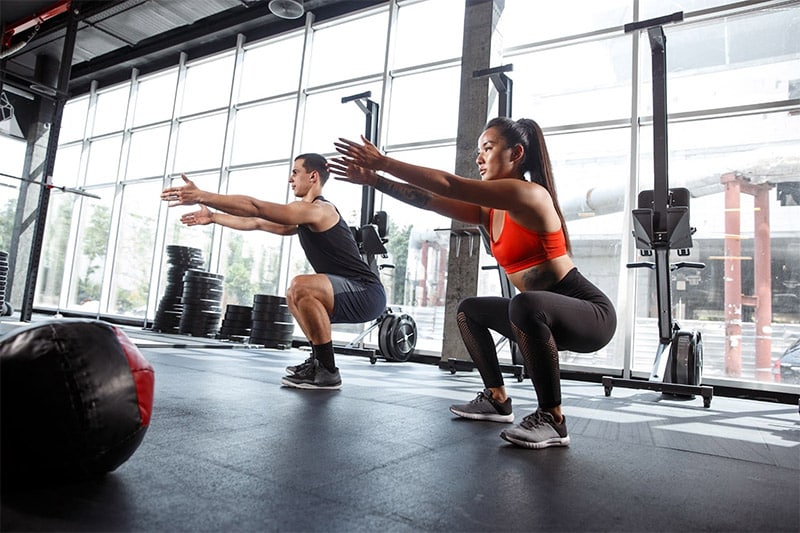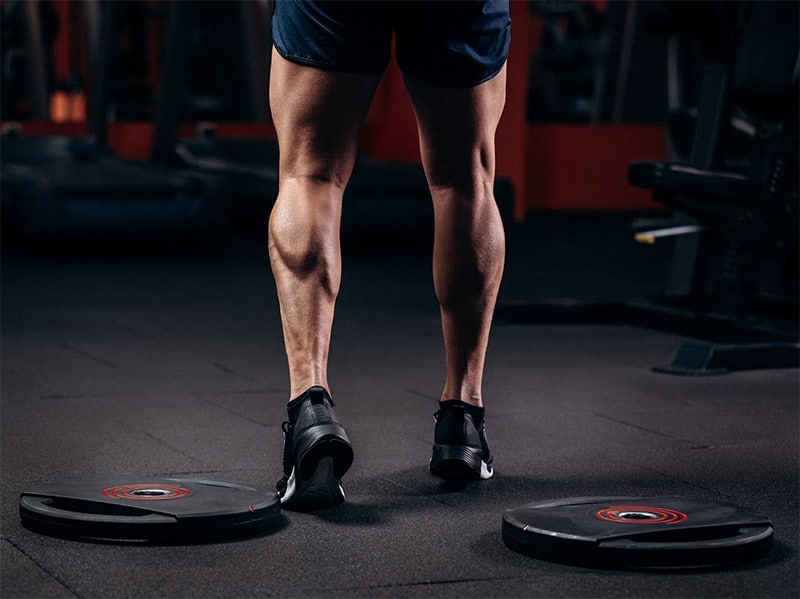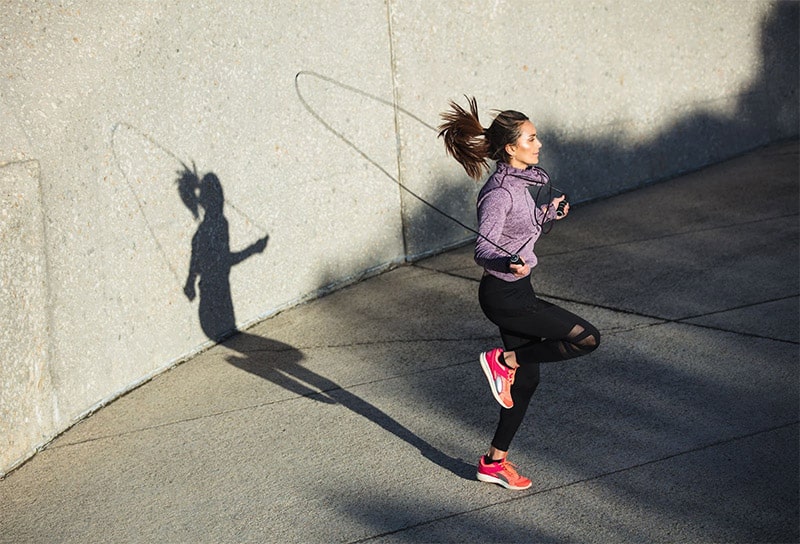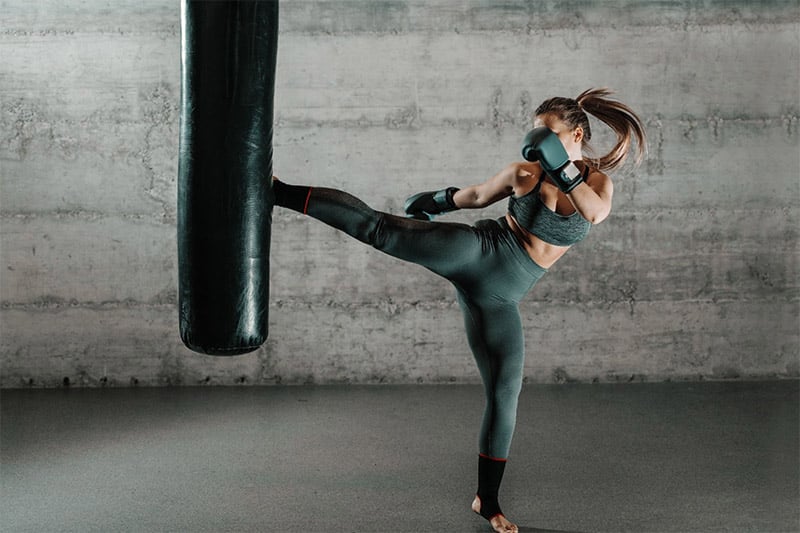The squat is the ideal exercise. You engage your full body to perform it, build strength and muscle and burn calories. Besides developing the muscles on your lower body, it also strengthens your core tremendously. Squats are known for building and strengthening the glutes and quads, but what about the rest of the muscles in your lower body? Do squats work calves?
Jump to:
What Makes the Squat So Effective?
As we said, the squat requires your full-body strength to properly perform it. When you’re balancing a bar on your back, you need to have total body coordination and effort. This is why the squat is considered an excellent calorie burner and muscle builder.
How Do Squats Work?
When squatting with a barbell, you put your body in a defensive position. This employs your sympathetic nervous system which is also known as fight-or-flight system. When performing squats, your body releases testosterone and the growth hormone. Both of them lead to increased muscle mass and strength gains.
So, besides building muscle in your entire lower body when performing the squat, this hormonal release also contributes to muscle gains in your entire body. This is one of the things that make the squat the greatest full-body exercise.
This hormonal response is also beneficial for improving some other health markers, like lowering hypertension and fighting diabetes.
Benefits of Squats on Lower Body Development

Strengthen Your Lower Body Muscles
Your lower body contains some of the biggest and most powerful muscles. For instance, your glutes, quadriceps, hamstrings, adductors, hip flexors, and calf muscles are engaged in almost every move you make on a daily basis – from getting out of bed to sitting down in a chair.
Exercises such as the squat can significantly help to boost muscle growth, tone and strengthen your lower body muscles. When these muscles are strong and in a good condition, you will notice that it’s easier for you to comfortably move, you experience less pain, and that walking and exercising are much easier for you to do.
Boost Your Strength and Athletic Performance
If you compete in some sport, adding jump squats to your workout routine can help you gain more strength and explosive speed which, consequently, may help improve your athletic performance. Training jump squats at least 3 times a week can boost a few different athletic performances simultaneously, such as sprint time and explosive strength.
Does Squats Work Calves?
We already mentioned that the squat is the go-to exercise for building full body strength, powerful quads and glutes. However, this exercise also targets your hamstrings and calves. During the process of squatting, there are many muscles involved and the calves are one of the most important. Wondering why?
Well, for starters, calf muscles are essential in supporting your body. They are even more engaged when there is a certain level of resistance on them, for instance, a heavy weight barbell. When the barbell is on your back, your calves support the extra weight on your body.
Calves are also essential for providing knee flexion and ankle support. In other words, you wouldn’t be able to squat without putting your calf muscles to work. Furthermore, the calf muscles assist the other muscles in your lower body through the entire squatting movement.
All of your lower body muscles work together to do a squat, and the calf muscles work together with your glutes, quads, hamstrings, and hip flexors to execute this movement. All this happens just for stabilizing and lowering the weights on your back.
Next, the calf muscles are also targeted as you shift the bar upward back to the standing position. During this movement, you engage the calves to push the weight upwards while still balancing and stabilizing your body during the movement. Calves are mostly engaged when you are at the lowest part of the squat.
When squatting, depending on the speed of the squat, different muscles are targeted more. However, the calves are always activated regardless of the type of squat and the speed with which it’s performed. So, yes, long story short – squats definitely work calves and contribute to calf growth.
What Calf Muscles Are Used During the Squat?

When we use the phrase “calf muscle” we technically describe the gastrocnemius muscle. However, the lower leg consists of many other muscles as well. Here are some of the most crucial ones.
Gastrocnemius – This is the main part of the calves. The Gastrocnemius can be seen from the front and the back. It consists of two parts which are located higher up on the lower leg.
Peroneus Longus – This is the outer part of the calves which is also long and continues down the lower leg.
Soleus – The soleus muscle is also known as the “front calves.” The soleus is not a very big muscle but it’s essential for ankle and foot flexion. It’s located on the front part of your lower leg but it’s in the interior.
Tibialis Anterior- This muscle is similar to the soleus, but it’s longer and can be found on the anterior part of your lower leg.
Peroneus Brevis – This muscle is the longer part of the calf muscle. It goes lower down to the ankle.
Why Are Squats Not Good for Calves?
Since squats target your calves only as a secondary muscle, chances are, you won’t see any significant improvements in calf development, strength, tone, or size from doing squats. In order to truly target your calf muscles and encourage them to grow strong, you need specialized calf training. It’s important to properly target them with exercises that work the calves as a primary muscle.
Research has shown that squats work calves more when they are done incorrectly. For instance, if your knees are too far out or too far in when squatting, a bigger portion of the workload will be transferred to your calves. The problem with this is that doing squats with the wrong knee placement can injure your lower back and knees. What’s more, it reduces the muscle activation in the hamstrings, quads, and glutes, minimizing the effectiveness of your squats.
- Maintaining a proper squat form reduces the workload on your calves.
- Studies have shown that your calf muscles work harder if you do squats incorrectly.
- Squatting with bad form increases your risk of injury.
- If you squat in a way that works your calves, the muscles in your upper legs will be neglected.
- There is really no way to safely and properly do back squats that target your calves.
Since we’ve already established that performing squats with proper form targets your calves less, we can freely say that squats are not the best calf-training exercise. An effective calf exercise should target the calf muscles more when executed correctly. It’s imperative to pick exercises that will help you build calf strength without putting you at risk of injury.
The Best Non-Squat Exercises for Your Calf Muscle
Since the range of motion of the typical squat doesn’t mainly target your calf muscles, to boost calf strength, you’ll want to add different exercises to your lower body workout routine. Here are a few excellent calf exercises to boost muscle growth.
Jump Rope

When jumping rope, you need to balance the balls of your feet and jump constantly, which makes this exercise one of the best exercises for targeting the calf. You can easily perform your cardio workouts with a jump rope. Start with just a few minutes of jumping rope, then slowly work your way up to 15 minutes of nonstop jumping. This is a great intensive workout for your calf muscles that will soon provide results.
Calf Raises
Whether you prefer doing the standing calf raise or the seated calf raise, both exercises are a great option for targeting your calves when strength training. Calf raises require a certain range of motion that causes the calf muscles to tense during the entire upward and downward movement of the calf raise. When done with proper form, the calf raise can give incredible results. To grow your calf muscles in size and define them better, do calf raises with 3–5 sets of 8–12 reps. You can also opt for weighted calf raises for greater resistance.
Cycling/Spinning
Cycling is another great calf exercise. Whether you prefer cycling on local roads, love spending time on the stationary bike at the gym, or enjoy your spin classes, you’ll definitely get a great calf workout of it. To reap the most benefits of this move, make sure to adjust your bike seat height properly. Once the pedal is at the lowest point, you should feel a slight stretch in your calf muscles. This stretch activates your calves and helps increase their definition, strength, and endurance.
Boxing

Boxing is one of the most incredible cardio and calf-strengthening exercises you can do. No worries, you don’t have to have a partner to be able to practice boxing. You can buy yourself a boxing bag or enroll in a boxing class where you’ll be punching a heavy bag – this will provide a great workout. Make sure to train with a professional instructor who will teach you how to box with proper form. This will help you to improve your balance, burn more calories and will get a great workout for your calves.
Box Jumps
Calves are one of the primary muscles you use when jumping. Therefore, adding jumping exercises to your exercise routine for strengthening your calves makes perfect sense. One of the best exercises for this purpose are box jumps. For best results, do 3–5 sets of 5 reps, with 90 seconds of rest between sets. Your best bet is starting with low box jumps and then gradually working your way up. Box jumps target your calves much more than squats do.















